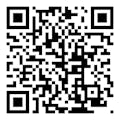
The McKenzie Method of MDT is a reliable assessment process intended for all musculoskeletal problems, including pain in the back, neck and extremities (i.e., shoulder, knee, ankle etc.), as well as issues associated with sciatica, sacroiliac joint pain, arthritis, degenerative disc disease, muscle spasms and intermittent numbness in hands or feet.
This well-researched, exercise based approach of assessment, diagnosis and treatment uses a comprehensive and clinically reasoned evaluation of patients. The treatment methods promote the body’s potential to repair itself.
If utilized correctly, the achievable goals are:
- Understanding symptoms and behaviors
- Determine the most appropriate and effective treatment plan.
- Eliminate symptoms and restore full function.
- Empower the patient to self treat and prevent recurrences.
- Help inform patients if other medical advice or testing is needed.
How does the McKenzie Method work?
The McKenzie Method is comprised of four primary steps: assessment, classification, treatment and prevention.
Most muscle, bone, or joint pain is “mechanical” in origin, which means it is not due to a serious pathology like cancer or infection, but rather a result of abnormal forces or mechanics occurring in the tissue. Further, it means that a position, movement or activity caused the pain to start. If a mechanical force caused the problem then it is logical that a mechanical force may be part of the solution. The MDT system is designed to identify the mechanical problem and develop a plan to correct or improve the mechanics and thus decrease or eliminate the pain and functional problems.
In the simplest and most common instance, this may mean that moving in one direction may provoke and worsen the pain, and moving in the opposite direction may eliminate the pain and restore function. This is known as Directional Preference. Other patients may have pain just at the end of movement or with certain functional movements like throwing or stair climbing. The McKenzie assessment explores these different positions and movements, how the patient performs them, and the response to these movements. Interpreting this information, the clinician determines which of the movements and posture becomes the treatment as well as the necessary exercise dosage.
For more information, Contact Us at Kenner, LA Center.

